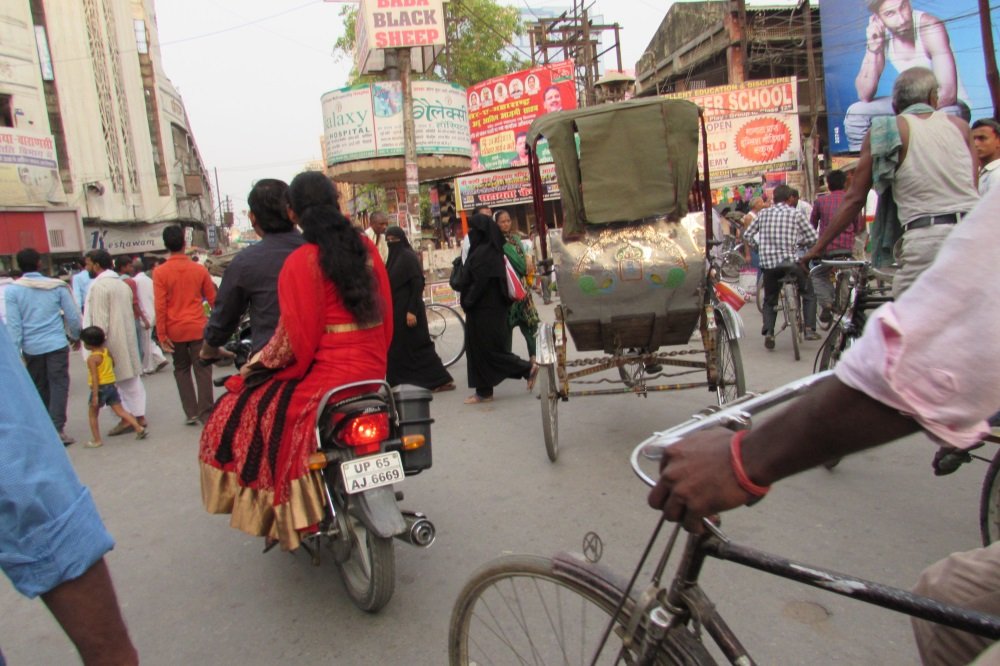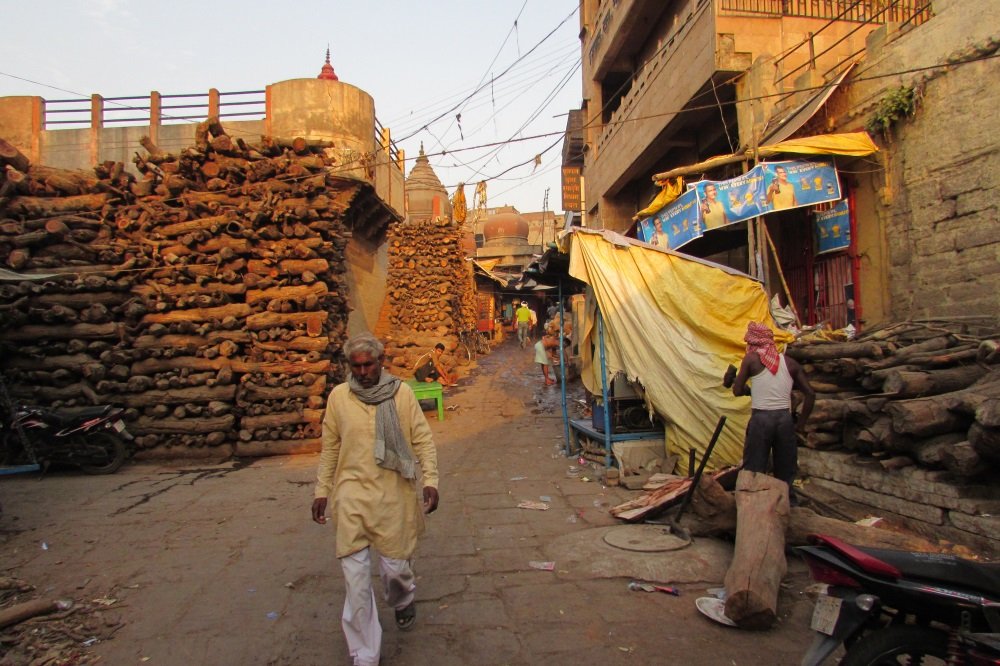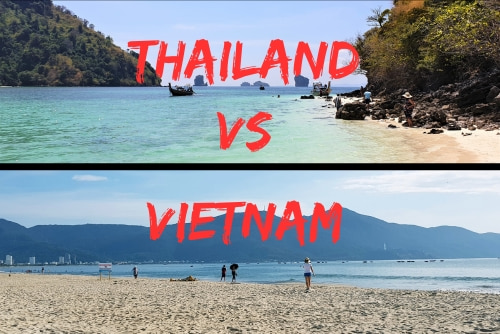The next destination of our trip through India was Varanasi. Pushed for time we flew from Jaipur to Varanasi via Delhi with Jet Airways. We discovered that Flying in India: Jaipur Delhi and Varanasi was a little different to many other countries.

Advice on Flying in India: Jaipur Delhi and Varanasi
Airport security.
In India there is more than one security area, security tags are given for each piece of luggage including carry on luggage and handbags, these are then stamped as you pass through security. This is very important because if your luggage isn’t stamped you won’t be allowed on the aircraft, so if you are handed tags make sure you put them on your luggage.
Men and women have separate security points, for privacy women will be taken to a screened area frisked by a female airport employee.
We had to repeat these processes when we caught our connecting flight from Delhi to Varanasi and had to attach a new set of tags to our luggage for the next flight.
We were very happy with our Jet Airways flights, the Staff were very friendly and the service was outstanding. If you collect airline rewards points Jet Airways is an Etihad Airways partner.
Day 1 of Flying in India: Jaipur Delhi and Varanasi
Where to stay in Varanasi.
Our home for the next 2 nights in Varanasi was the Hotel Radisson. The Hotel Radisson Varanasi is a well appointed hotel with clean, comfortable rooms and restaurants. The Hotel is within walking distance from the JHV Mall, a great place to pick up a bargain.


Varanasi Ghats
We were picked up from our Hotel and taken to the Ghats. We walked through streets were congested with pilgrims, shop keepers, Holy men, cows, dogs, oxen, cars, motorbikes, trishaws, and bicycles with their horns constantly beeping. We fought our way through the sea of people, traffic and animals until we arrived at the steps of the Dashashwamedh Ghat. Here we caught our first glimpse of the River Ganges.

After boarding our boat we floated up the river passing stunning temples and palaces. The river banks were a hive of activity, children laughed and played in the water, people washing clothes, practised yoga, holy men meditated and others cleansed their souls with a ritual bath.
We made our way to the Manikarnika (Cremation) Ghat and from a respectful distance we watched as bodies decorated with beautiful flower garlands, were taken down to the Ganges to be cleansed.

The funeral party then took their loved one up the stairs to have the flowers and decorative covers removed and later brought them down and laid on the funeral pyre to be burned.
We watched as the fire was lit with the eternal flame and sandalwood powder is thrown onto the pyre so the air was sweetly perfumed.
The chief mourner (who is male, as women are not allowed to attend the ceremony) has his head shaved and wears a white robe, stays with the body until it has turned to ashes which takes around 3 hours, after which the ashes are thrown into the Ganges and finally their loved one is released from life’s earthly confines.
I suppose some may think it is a very morbid thing to watch, but I found that I felt very honoured to be allowed to watch such a beautiful and caring ritual. It also reaffirmed my belief that we are only here for a short time and we have to make the most of it while we are here, before we ourselves join the great circle of life.
(adsbygoogle = window.adsbygoogle || []).push({});As the sun set we floated back up to the Dashashwamedh Ghat, I lit some flower fringed candles and set them floating down the Ganges.


Ganges Aarti Performance
It was dark by the time we arrived back at the Dashashwamedh Ghat and just in time for the Ganges Aarti performance to begin.
This is a very moving performance which is held every day and begins with a group of young priests chanting mantras with a large lit lamp in their hand. Music begins, with the beating of cymbals and bells, followed by more chanting and clapping. Priests blow conch shells and multi-tiered brass lamps are raised in different directions making it a performance of light, sight and sound that should not be missed.
Leaving our boat after the performance we made our way through the mass of people to the car.
The streets were lit up, with colour everywhere, from the brightly coloured signs, to the sparkle of embroidered saris, textiles, and the flash of shiny trinkets, we made our way through the cacophony of street food vendors, cars and motorbikes with their horns beeping, trishaws, bicycles, people, cows and dogs. The experience was such sensory overload, we returned to the car laughing and feeling thoroughly exhilarated. It will always be one of the most memorable nights of our life.
Day 2 of Flying in India: Jaipur Delhi and Varanasi
Hindu University at Benares, this impressive campus was founded in 1916 by Pandit Mandan Mohan Malviya and is an internationally reputed centre of learning.
Bharat Mata (Temple of Mother India) was inaugurated by Mahatma Gandhi and features a huge marble map of India on the ground floor. The map was extraordinary because it is in 3D, here you can see ocean depths, rivers, and the Himalayas rising into Tibet.
Durga Temple is a bright red temple sometimes known as the monkey temple due to the numerous monkeys that lived there. The monkeys have now been taken away (though I did see one cheeky monkey hanging around as we left). Our Guide showed us through and explained the religious significance of this beautiful temple.
(adsbygoogle = window.adsbygoogle || []).push({});The Buddhist city of Sarnath is where you will find the carving of four lions known as the Ashoka Pillar, the national emblem of India. The lions once topped the pillar which has since been destroyed. We admired many ancient statues housed in the museum and our guide explained the differences between Buddhism and Hinduism which we found fascinating.

Sarnath is the place where Buddha chose to deliver his first sermon. There are many Buddhist monuments and edifices in Sarnath, such as the Dhamekha Stupa, Chaukhandi Stupa, dating from the 3rd century BC and 11th century AD. We found this vast expanse of ancient ruins very peaceful and were surprised that it was surrounded by many monasteries and temples of different schools of Buddhism from Japan, China, Thailand, Burma to name a few.

Day 3 of Flying in India: Jaipur Delhi and Varanasi
We woke early and made our way back to the River Ganges for a dawn boat ride, the warm glow of the rising sun transformed the colour of the buildings we passed, the banks came to life as people came down for their morning bath. While the sun reflected across the water on this misty morning, we basked in the peace and tranquillity as the oars slapped against the water.


We disembarked at the Manikarnika (Cremation) Ghat and walked our way up to the twisted maize of alleys. The walls of tightly packed logs of firewood seemed to go on as far as the eye could see and took up most of the pathway, we wound our way past houses, small shops and shrines which were centuries old.


As we wondered the alleys we came to the Kashi Vishwanath Temple (The Golden temple), we went as far as we was permitted and caught a glimpse of the golden spires before continuing on visiting the little shops along the way.
Now it was time to go back to our hotel where we were given a late checkout for our flight back to New Delhi.
Varanasi to New Delhi
We flew with Air India form Varanasi to Delhi, the check in was smooth, we remembered to get tags for all our luggage and make sure it was stamped.
We found the Air India aircraft not as modern as the Jet Airways aircraft we had taken earlier but we arrived safe and well.
We were met at the Domestic Terminal and taken to the International Terminal where regretfully we had to say goodbye to this fascinating country.
(adsbygoogle = window.adsbygoogle || []).push({});Namaste!
We enjoyed our time Flying within India: Jaipur Delhi and Varanasi and again I have to thank Trinetra Tours for making our India trip everything we dreamed it would be and we look forward to our next trip to India.
Have you been to India? What experiences did you have in India? Feel free to leave a comment.



